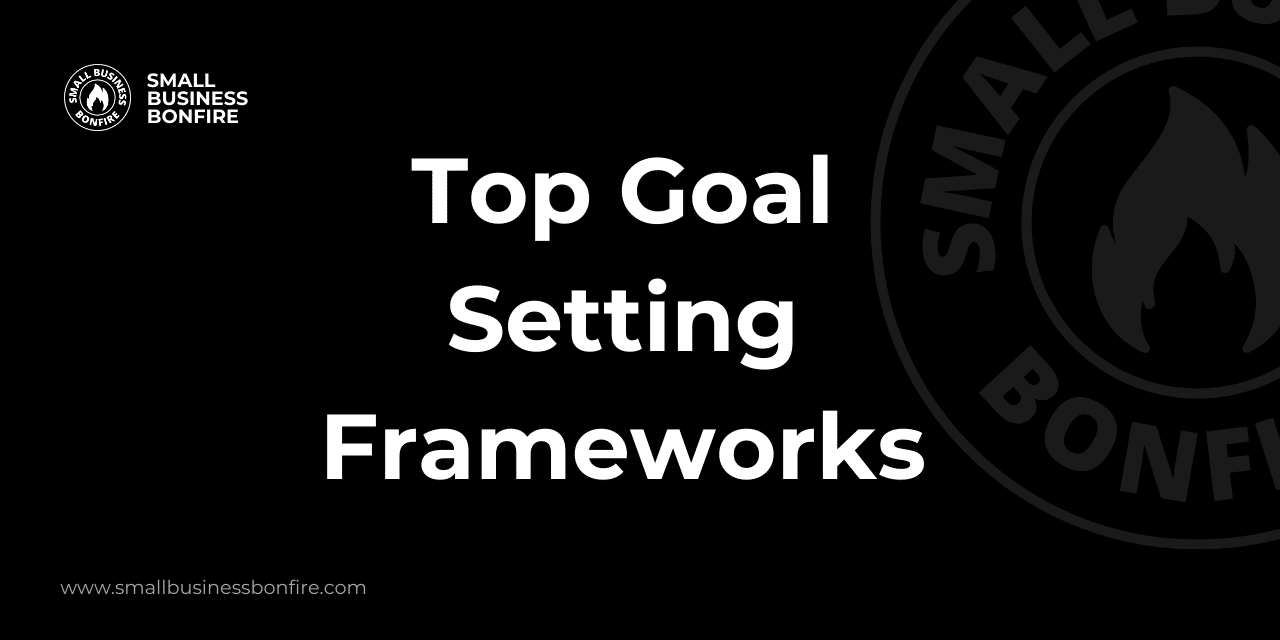The hotel guest who wouldn’t leave
NEW YORK — On a June afternoon in 2018, a man named Mickey Barreto checked into the New Yorker Hotel. He was assigned Room 2565, a double-bed accommodation with a view of midtown Manhattan almost entirely obscured by an exterior wall. For a one-night stay, he paid $200.57.
But he did not check out the next morning. Instead, he made the once-grand hotel his full-time residence for the next five years, without ever paying another cent.
In a city where every inch of real estate is picked over and priced out, and where affordable apartments are among the rarest commodities, Barreto had perhaps the best housing deal in New York City history.
Now, that deal could land him in prison.
The story of how Barreto, a California transplant with a taste for wild conspiracy theories and a sometimes tenuous grip on reality, gained and lost the rights to Room 2565 might sound implausible — another tale from a man who claims without evidence to be a first cousin, 11 times removed, of Christopher Columbus’ oldest son.
But it’s true. Whatever his far-fetched beliefs, Barreto, now 49, was right about one thing: an obscure New York City rent law that provided him with many a New Yorker’s dream.
On that summer day nearly six years ago, Barreto walked through the hotel’s revolving door on Eighth Avenue and entered a lobby centered by a 20-foot art deco chandelier, a nod to the hotel’s geometric architecture.
When it opened in 1930, to great fanfare, the New Yorker Hotel was not just the largest in the city but the second largest in the world. It was an opulent hotel of the future, with 92 telephone operators, a power-generating plant and a radio with four channels in each room.
Today, the mystique has faded, although the property still attracts tourists with its central location. Less than half the rooms are open to guests, and the hallway carpet is tattered and lined with brightly lighted vending machines of sodas and snacks. Most of the building is occupied by followers of the Rev. Sun Myung Moon, a self-proclaimed messiah who bought the hotel in 1976 and made it his organization’s headquarters.
Even by New York City standards, the room to which Barreto was assigned was small, just under 200 square feet. The beds consumed most of the maroon-and-gold carpeted space. A tiny closet could fit a handful of garments. There was also a 42-inch TV with free HBO.
Over the course of several recent interviews, Barreto described what happened next — events that led to a yearslong ordeal for the hotel.
In conversation, Barreto vacillates between lucid and unstable. He said he experienced panic attacks and seizures but insisted he had never been diagnosed with a mental illness — even as he claimed to be the chief of an Indian tribe he founded in Brazil.
Much of Barreto’s story is corroborated by years of court records, but one crucial moment comes from only his account: On that first night, he settled into his room, high above midtown, with his partner, Matthew Hannan. Before that night, Barreto says, Hannan had mentioned, in passing, a peculiar fact about affordable-housing rules that pertain to New York City hotels.
With their laptops open, he claimed, they explored whether the New Yorker Hotel was subject to a little-known section of a state housing law, the Rent Stabilization Act.
Passed in 1969, the law created a system of rent regulation across the city. But also subject to the law was an assortment of hotel rooms, specifically those in large hotels built before 1969, whose rooms could be rented for less than $88 a week in May 1968.
According to the law, a hotel guest could become a permanent resident by requesting a lease at a discounted rate. Any guest-turned-resident also had to be allowed access to the same services as a nightly guest, including room service, housekeeping and the use of facilities, such as the gym.
The room becomes, essentially, a rent-subsidized apartment inside a hotel.
Despite the reasonable assumption that what they were undertaking had been orchestrated from the start, Barreto claimed the idea only took shape when his and Hannan’s online search stumbled upon the 27th line of a 295-page spreadsheet titled “List of Manhattan Buildings Containing Stabilized Units.”
According to court documents, Barreto left his room the next morning, rode the elevator to the lobby and greeted a hotel employee at the front desk. He handed over a letter addressed to the manager: He wanted a six-month lease.
The employee dialed the manager, and after a brief exchange, Barreto was told that there was no such thing as a lease at the hotel and that without booking another night, he would have to vacate the room by noon. The couple did not remove their belongings, so the bellhops did — and Barreto headed to New York City Housing Court in lower Manhattan and sued the hotel.
In a three-page, handwritten affidavit dated June 22, 2018, Barreto cited state laws, local codes and a past court case in arguing that his request for a lease made him a “permanent resident of the hotel.” Removal of his items amounted to an illegal eviction, he said.
At a hearing that July 10, in the absence of any hotel representatives to oppose the lawsuit, the judge, Jack Stoller, ruled in Barreto’s favor. Stoller not only agreed with his arguments but even cited the same case law as Barreto and ordered the hotel “to restore petitioner to possession of the subject premises forthwith by providing him with a key.”
Barreto returned to Room 2565 within days, now as a resident of the hotel — and soon, as its new owner.
Back in their room days after the ruling, the couple read Stoller’s ruling over and over. In it, there was no order that the hotel provide a lease, no limit on their stay, no suggestion that rent was due.
But one word was mentioned throughout: possession. Barreto was given “final judgment of possession.”
He said he called the court to ask someone to explain what exactly that meant. “You have possession,” Barreto, sharply and slowly stressing every syllable of the final word, said he was told. “You’re not a renter. You have possession of a building.”
And how is possession of real estate recorded? In New York City, it is at the Department of Finance.
With the judge’s order in hand, Barreto and Hannan visited the agency’s lower Manhattan offices. Barreto said he asked a clerk about putting Room 2565 in his name — as a new homeowner would — but was told that would be impossible because the hotel, unlike apartments, was not split up in city records by rooms.
The property had one entity on file, the hotel itself, identified in city records as Block 758, Lot 37. So, citing the judge’s order, Barreto filled out paperwork declaring his ownership of that.
“If I have the right to register it all,” he recalled thinking, “then I will register it all.”
In New York City, a change of ownership is recorded in the voluminous Automated City Register Information System, or ACRIS, which holds the real estate records for every property. Thousands of documents such as deeds and mortgages are received and published daily, too many for the city’s Department of Finance employees to scrutinize before posting online.
Barreto tried repeatedly to file for a deed but was rejected over various technicalities. After his sixth attempt, a clerk told him he needed to contact the sheriff’s office. (In New York City, the sheriff’s office is a division of the Finance Department.)
Barreto said he spoke to a sheriff’s deputy, an investigator in the department, who asked why he was filing so many times. He said he responded that he had been given possession of the property but was having technical difficulties.
At the same time, the hotel’s owners had filed their own lawsuit to evict Barreto, claiming the hotel was exempt from the housing law’s hotel provision. Ultimately, the lawyers could not produce documentation from May 1968 to prove the hotel’s weekly rate was at the time more than $88 a week. The judge dismissed the suit.
Meanwhile, Barreto filed for a deed for a seventh time. It was accepted.
On the afternoon of May 17, 2019, nearly a year after Barreto booked his one-night stay, he was identified in ACRIS as the owner of the New Yorker Hotel, a 1.2 million-square-foot building.
Barreto now had a recorded deed showing he had ownership of the hotel, but the true and only owner since 1976 was still the Unification Church.
Barreto’s next moves went far beyond the rights of a now-permanent guest.
He immediately fired off an email to a lawyer for the hotel, demanding to know about the property’s recent finances, and included a claim that he was owed $15 million in profits.
“That payment is past due,” he wrote, “and is due immediately.”
A few days later, another demand: The 38th floor needed to be cleared of guests. “I need to do an inspection of the building with my architect ASAP,” he said.
The lawyer quickly responded, “What are you referring to?”
“I have ownership rights in that building,” Barreto replied. “That’s what I’m referring to.”
He also wrote about wanting to make upgrades, including to the revolving door at the hotel’s entrance on Eighth Avenue between West 34th and West 35th streets. “That area looks like a war zone,” he said.
While the lawyer scrambled to file a lawsuit to revert ownership of the hotel, Barreto sent off an email to Wyndham Hotels and Resorts, which manages the property, notifying it that he now owned it. A Wyndham representative asked for a litany of legal and sales documents to be sent as proof. (They were not.)
Barreto sent a memo to M&T Bank, the hotel’s lender, and asked for all accounts to be put into his name. (They were not.)
Next, Barreto walked into the Tick Tock Diner, which is connected to the lobby by double doors. He dropped off a letter addressed to the owners. Monthly rent checks, he wrote, should be sent to a new address: Room 2565.
One of the diner’s owners, Alex Sgourgos, recognized Barreto. Since he had moved into the hotel, Barreto, along with Hannan, frequently ate at the Tick Tock, a round-the-clock restaurant styled as a 1950s diner with neon lights, red booths and a laminated menu. The two men often ordered breakfast, sandwiches and chicken entrees, Sgourgos said, and always paid in cash.
“They looked like strange guys,” he added.
After reading the letter, Sgourgos called the Unification Church, which told him to ignore Barreto’s demand. The couple continued to eat at the restaurant, he said, and never mentioned the rent payments again.
Two days after Barreto walked into the Tick Tock, the lawyer for the hotel was in court, explaining the situation and pleading with a judge to issue an order to stop Barreto from representing himself as the owner.
The lawyer, Matthew Meisel, said his law firm partners had “never seen such an egregious set of circumstances.”
In court, Meisel said he believed that Barreto was under investigation by prosecutors in the Manhattan district attorney’s office, although he did not specify for what.
Across the country, it is not uncommon for overworked municipal recorders to accept property filings under the assumption that they are legitimate, and for real estate speculators to take advantage of the system.
But Bill Lienhard, a lawyer who has represented many victims of deed theft in New York City, said he was stunned by the apparent ease with which Barreto transferred a 41-story Manhattan hotel into his name.
“Boy,” he said, “this takes the cake for the city’s record department not paying attention.”
Representing himself in court, Barreto insisted he had done nothing wrong. “As for me proclaiming to people I was the owner, I only did that after I had the deed,” he said in court.
A few months later, the judge issued a ruling: “The subject deed is a forged deed by all accounts,” he wrote. Barreto did not own the property.
But that was not the end.
Despite the judge’s ruling about ownership, Barreto was still a legal resident of the hotel.
His home, Room 2565, is near the end of a long narrow hallway that zigs and zags from the elevators. Around the corner is Room 2549, where Muhammad Ali spent the night in 1971 after losing the so-called Fight of the Century to Joe Frazier at Madison Square Garden.
With no job, Barreto said, he spent hours in his room every day, researching his family’s history in Brazil, where he was born and raised in the southern river town of Uruguaiana. He has an angular, youthful face and a military-style haircut and fidgets with his clothes as he talks.
A relative said he had excelled in school in Brazil, had never gotten into trouble and moved to the United States in 1990s. As a teenager, he was considered particularly gifted — the smartest child in the family.
But in recent years, he developed an obsession with his genealogy, claiming to have uncovered a direct connection to Columbus through Portuguese royalty. In Civil Court, he started to invoke the explorer’s name — “My family name ‘Muniz Barreto Columbus,’” he wrote in a 2021 filing.
Barreto also delved into the Unification Church’s origins on the Korean Peninsula, its expanding economic interests on other continents and its business connections with North Korea. He started to believe that leaders of the church were sending its income, including from the hotel, to North Korea in violation of sanctions imposed by the United States.
In an interview, Barreto said his concerns about the finances of the religious organization had become the main driver for staying in the hotel. He called it his patriotic duty as an American citizen, likening his efforts to someone having been able to stop one of the hijackers before 9/11.
“I’m sorry I disrupted your attempt to finance weapons of mass destruction,” Barreto said. “It’s Mickey Barreto versus North Korea.”
While Moon, who died in 2012, was born in what is now North Korea, his church’s current ties to that country are unclear; it once operated factories and a hotel there. The church came under intense scrutiny in Japan after the 2022 assassination of Shinzo Abe, the former prime minister. The alleged killer believed that Abe had ties to the church, which has long been accused of preying on vulnerable people for donations, in Japan and elsewhere.
Barreto voiced similar claims to relatives, about both the church and his family’s genealogy, leaving them confused about whether his statements were tethered to reality.
“It was something that was just hard to believe,” said the relative, who asked to remain anonymous because of sensitivity within the family. “I was thinking maybe it’s true, I don’t know. With Mickey, it’s hard to say.”
A Unification Church spokesperson declined to comment about Barreto’s allegations, his residency or the lawsuits.
Barreto had prevailed in two separate court proceedings; he had a right to a rent-stabilized lease for a room at the New Yorker Hotel. He had access to room service, housekeeping and all the hotel’s facilities.
But he refused to sign a lease — or pay rent.
The hotel’s first offer of a lease, according to him, exceeded the legal rent for a rent-stabilized room. He also declined additional offers over the years, claiming he was concerned about the church’s finances.
Last year, the hotel’s owner succeeded in court against Barreto. A judge ruled in the hotel’s favor, citing Barreto’s refusal to pay or sign a lease. He was evicted in July.
Even while that second eviction case had been working its way through Housing Court, Barreto had not stopped portraying himself as the property owner. In September, he submitted another deed showing that the hotel had been transferred once again into his name, and that the city had accepted it.
The transfer caused the hotel to lose a property tax exemption, resulting in a $2.9 million increase on its property tax bill.
Back in court, the hotel’s lawyers urged a judge to hold Barreto in contempt, and a judge signaled on Feb. 7 that there would be another hearing in the case.
A week later, police officers showed up before sunrise at the apartment on the Upper West Side where Barreto had been staying with Hannan.
Barreto was arrested and arraigned later that morning in a Manhattan court on 24 counts — including 14 felony fraud counts — in what prosecutors said was a criminal scheme to claim ownership of the hotel. Hannan, who Barreto said was not involved beyond staying with him at the hotel for much of five years, was not charged or accused of any crime.
Barreto is now awaiting trial in state Supreme Court in Manhattan and facing several years in prison if convicted. In jail before he was released on his own recognizance, Barreto said he used his one phone call to dial the White House, leaving a message about his whereabouts.
There was no reason to believe the White House had any interest in the case or any idea who Mickey Barreto was. But you could never quite tell with Mickey — he had been right once before.











